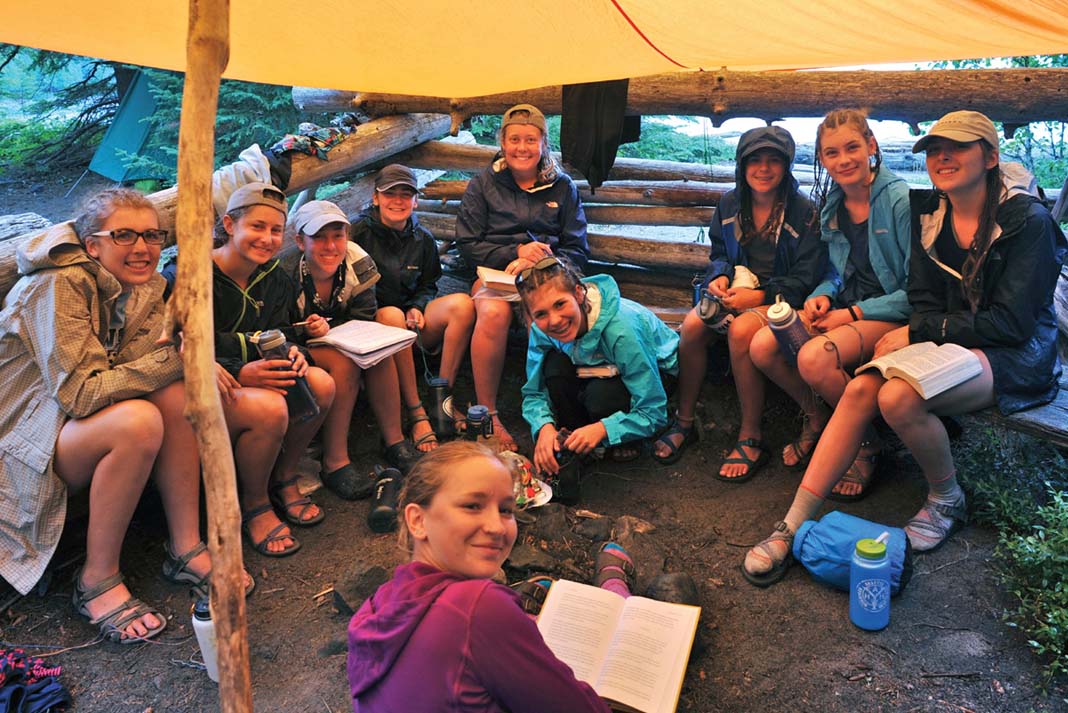Autumn transformed my summer. At the outfitters where I’d signed up for a stint of glory days guiding, my boss tasked me with the responsibility of role model for my 17-year-old co-guide. I’ll admit, I wasn’t sure how to connect with this up-and-coming cohort of kayak guides.
He asked me to show my young protégé more than just the mechanics of a successful trip, or even the qualities of a good leader. I was to model for Autumn possibility. “She has the potential to be a great guide,” he said. “Show her the way.”
Seasons of change: Growing a new generation of kayak guides
Our group was not the clutch of nearing-retirement engineers, professors, doctors and teachers I typically shepherded down the coast and pampered with gourmet meals for seven days. Rather, they were a gaggle of 14-year-old girls and two equally fresh-faced counselors from a Michigan summer camp—all cornrows, sunscreen and shy smiles crowded with train tracks and multi-colored elastics.
I was nervous as hell. Did I even know how to talk to teenagers anymore? How could I conceal my cluelessness about all things pop culture for 10 whole days? More frightening still, who was I to be a pillar of possibility?
I remembered a novel I’d read recently, Halfway Man, by the late Wayland Drew. Its title describes the protagonist’s uncertain position between worlds: traditional and modern, spiritual and material, developed and wild. Ultimately, he bridges the divides with a long paddling trip in the same northern country I was to guide the girls through. I felt neither naïve nor sage. Perhaps the solution to my own halfway-ness was as simple as going kayaking.

We launched in enthusiasm-sapping headwinds and crawled doggedly north up the coast. A dance instructor in her blink-and-you-miss-it hometown, Autumn was equally fluid in a kayak. As the waves built into whitecaps, her focus never wavered from the group. In the sweep position, she stayed beside the slowest tandem, offering encouragement and pointers on strokes and steering. As a leader, she navigated wide berths around shoals and headlands, positioned herself between the group and potential hazards, and picked out the finest campsite on a long stretch of surf-washed beach.
As the days stretched to a week, I realized Autumn was halfway herself. Sometimes, her maturity made the older counselors seem girlish by comparison; at other times, her own girlishness allowed her a wonderful connection and closeness with the campers. Maybe that familiar bridge was the foundation of the friendship that grew between us.
Worry washes away in the moment
“No pressure,” I’d cracked to my boss before the trip, masking nerves in sarcasm the way I often do. On the water and in camp, however, the anxiety washed away. Watching the girls become confident paddlers, sharing with them hidden swimming holes beneath cascading waterfalls and red rock amphitheaters rimmed in perfect jumping cliffs, showing them where people long ago recorded their most powerful stories and dreams in ancient rock paintings, I felt only joy and gratitude at helping them discover this world. My world.
Our experiences shape us, begin to define us, but they don’t have to limit us. It’s a trick of psychology that we tend to believe that the person we are today is our final self, fundamentally the person we’ll always be. That the many changes of our less experienced decades are reserved for our headstrong youth, not an ongoing process throughout our lives. Halfway men, and women.
My young campers, still in the fresh springs of their wild and precious lives, were filled with it. And none embodied it more fully—or compelled me to do the same that summer—than Autumn. Possibility.
After eight years at the editor’s desk, this is Virginia Marshall’s final issue of Adventure Kayak.

“Tell me, what is it you plan to do with your one wild and precious life?”—Mary Oliver | Feature photo: Virginia Marshall










